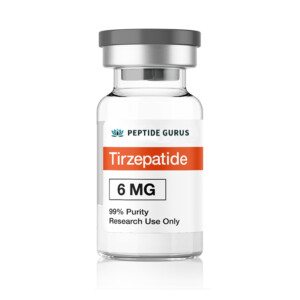Sistema de producción de péptidos a pequeña escala
Introducción
In the realm of biotechnology and pharmaceutical research, La demanda de sistemas de producción de péptidos eficientes y rentables nunca ha sido tan alta.. Sistemas de producción de péptidos a pequeña escala (SSPPS) han surgido como un punto de inflexión, ofreciendo a investigadores y desarrolladores una plataforma versátil para sintetizar y purificar péptidos a una escala manejable. Este artículo profundiza en las complejidades de SSPPS., explorando sus ventajas, componentes clave, aplicaciones, y los últimos avances que dan forma al futuro de la ciencia de los péptidos.
Understanding Small Scale Peptide Production Systems
SSPPS are designed to cater to the needs of laboratories engaged in early-stage research, descubrimiento de drogas, and biotechnology development. These systems enable researchers to synthesize short to medium-length peptides with high precision and reproducibility, often in quantities ranging from milligrams to grams. The scalability of SSPPS makes them ideal for optimizing peptide sequences, studying their biological activities, and validating their potential as therapeutic candidates.

Key Components of SSPPS
At the heart of any SSPPS lies a solid-phase peptide synthesis (SPSS) reactor, which utilizes a solid support (typically resin) to anchor the growing peptide chain. This reactor is coupled with automated liquid handling systems that precisely dispense reagents, solvents, and buffers, ensuring consistent reaction conditions. Advanced SSPPS also incorporate purification modules, como la cromatografía líquida de alta resolución (HPLC), to isolate the desired peptide from impurities. Finalmente, quality control instruments like mass spectrometers validate the purity and identity of the synthesized peptides.
Advantages of Small Scale Production
- Rentabilidad: SSPPS significantly reduce material and operational costs compared to large-scale production, making them ideal for initial screening and optimization phases.
- Flexibilidad: The scalability of these systems allows researchers to quickly adjust production volumes based on their experimental needs.
- Rapid Turnaround: With automated workflows, SSPPS can produce peptides in a matter of days or weeks, accelerating research timelines.
- High Purity: Integrated purification steps ensure that the final product meets the highest standards of purity, crucial for biological and medicinal applications.
- Ease of Use: User-friendly interfaces and pre-programmed protocols simplify the operation of SSPPS, even for novice users.
Applications of Small Scale Peptide Production
SSPPS find widespread applications across various disciplines, incluido:
- Descubrimiento de medicamento: They facilitate the synthesis of peptide-based drugs and drug candidates for preclinical testing.
- Desarrollo de vacunas: Peptides derived from viral or bacterial antigens can be produced for use in vaccine formulations.
- Ingeniería de proteínas: Researchers utilize SSPPS to modify proteins through peptide insertions, deletions, or substitutions.
- Herramientas diagnosticas: Peptides are essential components in the development of diagnostic assays, such as immunoassays and aptamers.
- Basic Research: SSPPS enable the study of peptide-protein interactions, vías de señalización, y procesos celulares.

Latest Advancements
Recent advancements in SSPPS include:
- Automatización & Integration: Fully automated SSPPS with integrated purification and analysis modules streamline workflows and minimize human error.
- Continuous Flow Synthesis: This technology allows for continuous peptide synthesis, enhancing productivity and reducing solvent consumption.
- Green Chemistry Approaches: Researchers are exploring eco-friendly solvents and reagents to minimize the environmental impact of peptide production.
- Artificial Intelligence Integration: AI-driven algorithms optimize synthesis conditions, reduce cycle times, and improve yield predictability.
Challenges & Future Prospects
While SSPPS offer numerous advantages, challenges such as complexity of synthesis for certain peptide sequences, scalability limitations, and cost considerations persist. Ongoing research and technological advancements aim to address these challenges, making SSPPS even more accessible and efficient. Future developments may include more sophisticated automation, increased process robustness, and the integration of emerging technologies like microfluidics and 3D printing.
Conclusión
Sistemas de producción de péptidos a pequeña escala represent a pivotal tool in advancing biotechnology and pharmaceutical research. Their ability to synthesize high-purity peptides quickly and cost-effectively has revolutionized early-stage drug discovery, vaccine development, and basic scientific inquiry. A medida que la tecnología continúa evolucionando, SSPPS will undoubtedly play an increasingly important role in shaping the future of peptide science and its applications. By embracing these innovative systems, researchers can unlock new possibilities and drive progress in the field of biotechnology.

